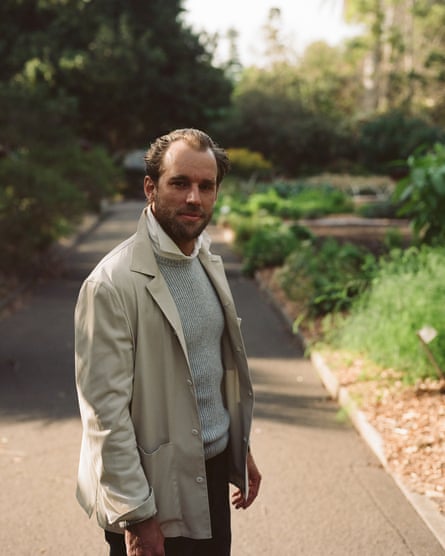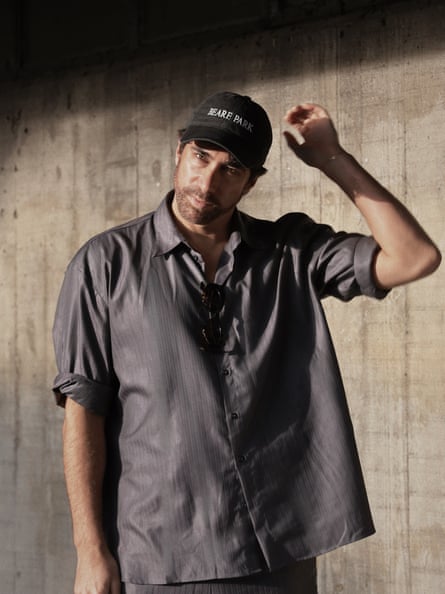
Seeing a well-dressed gentleman on the street gives me great delight. Especially when he’s doing the kind of quiet activity – sitting at a cafe or reading a newspaper – that gives me time to appreciate the subtle details in his outfit: a crisp pleat in the front of his trousers, or the play of textures like a cable knit on tweed.
I think this attention to subtle details requires a certain kind of presence. Someone who complements his tan by balancing shades of navy linen with black suede loafers must take joy from observing the world around him.
Of course, the ability to pull off polished menswear requires knowledge and preparation. You need to understand how to look after garments, in a way that goes beyond dropping bundles of shirts off to the dry cleaners every Saturday. Here three men-about-town share their approaches to clothing care.
‘The goal shouldn’t be perfect cleanness’
Patrick Johnson’s number one rule when caring for clothes is do the least of everything. “We tend to over-launder clothes, which isn’t great for them,” he says.
When the co-founder of tailor P Johnson comes home from a late night, he hangs up his clothes before heading to bed, so they can air out. If you can, he says, it’s better to hang them in a covered outdoor space.
Trousers with a crease should be hung over the bar of a coat hanger or clipped into place so the crease remains neatly pressed. To do this he says, “leave the fly front open so they can fold on their crease correctly”.
When it comes to doing laundry, he puts washable cottons, linens and most synthetics in the machine on the “lowest temperature possible, shortest and gentlest cycle possible with the absolute bare minimum of detergent”.
Merino and cashmere knits should be hand-washed in a basin with lukewarm water and a few drops of wool detergent, but this should be done scarcely because merino and other hairs are naturally odour-retardant. “The goal shouldn’t be perfect cleanness, it should be to remove odour, mild stains and hygiene,” he says. Aside from socks, underwear and bed linens, everything should be hung up to dry.
When it comes to dry cleaning, he takes a similarly minimalist approach. “Dry cleaning is a harsh process so it should be done only when absolutely necessary,” he says. “Traditionally they were sponged and pressed. Many of my own suits have never seen a dry cleaner.”
“I’ve been doing my own washing ever since”
Jordan Turner learned to do laundry at a young age. “When I was a kid, I had a velour tracksuit from Sean John that my mum had put in the wash and then the dryer. What came out looked transparent. I’ve been doing my own washing ever since.”
“She was a single parent back then who definitely had too much on her plate to worry about her 10-year-old fashionista’s clothing addiction,” he says.
after newsletter promotion

This means the writer and owner of Sydney bookshop Gertrude and Alice has had time to create his own laundry rules. He sorts wash loads into whites, darks, blues and neutrals. “Everything gets washed on cold and nothing gets tumble dried,” he says. He adds Leif x Jac+Jack’s laundry detergent, the smallest sprinkle of Omo and a quarter of the recommended dosage of fabric softener – he uses Earth’s choice. For whites, he adds a small amount of Napisan.
Jackets, pants, denim and sweaters are only washed when he’s spilt something on them, or if they’re noticeably dirty. “I find material quality changes from wash to wash,” he says.
To help prolong time between washes, he wears underlayers to protect his outerwear and keep it clean. “For example, I’ll always have an undershirt or lightweight tee when I wear jackets or sweaters, to stop oils being absorbed from my skin into the fabric.”

‘There’s nothing better than freshly air-dried’
For Matthew Lennon, looking good starts with investing in quality clothing, made from natural materials by brands he trusts. “Think organic cotton, wool and linen,” he says. “These pieces will last longer and are generally quite simple to care for.”
This helps Sarah and Sebastian’s global head of brand keep his laundry routine straightforward. “Most of my everyday clothing can be thrown in the machine on a regular wash,” he says. “I always separate colours from whites: laundry 101.”
Because he avoids using the dryer, his washing schedule is somewhat governed by the weather. “If I know there’s a hot, sunny day coming up over the weekend I’ll try to get through at least a couple of loads. There’s truly nothing better than freshly air-dried.”
Rather than using an iron, he keeps a steamer on hand. “It’s been a gamechanger. I also have a mini one for travel which is great for keeping shirts crinkle free.”
Anything trickier to launder, like silk shirts and cashmere sweaters, or that needs precise pressing (like suit jackets and pleated pants) he will take to the dry cleaner, but he does so sparingly. “I get at least two to three wears before I send them back,” he says. “Providing I haven’t worn them out for a night of dancing or spilt something on them at dinner.”
“I have a very good relationship with my dry cleaner but try not to see them too often.”



